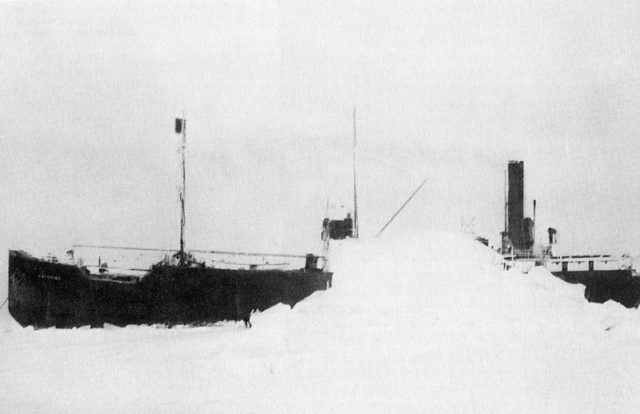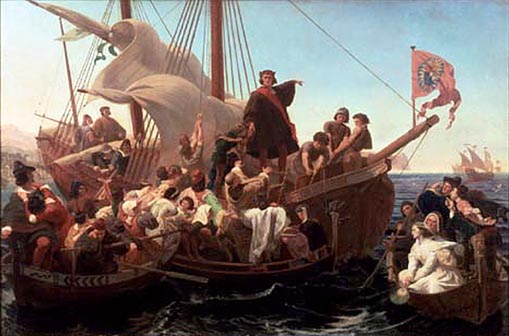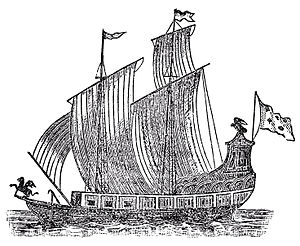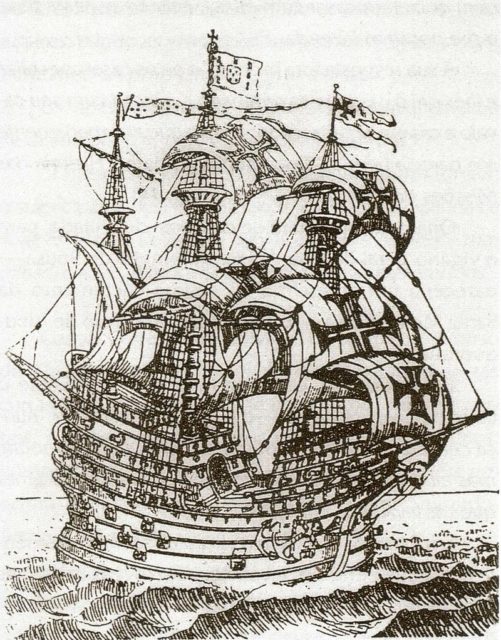It is estimated that about 3,000,000 undiscovered shipwrecks are still sitting on the floor of the various seas and oceans around the world. Many of these shipwrecks are being actively searched for; some of these searches are being funded by private organizations, whilst some are sanctioned by governments. Historians believe that these shipwrecks are hiding billions of dollars worth of treasure between them, though international law means that if you found some, you might not necessarily be able to keep it.
For your pleasure, we have compiled a short list of some of the greatest shipwrecks that are still out there, waiting to be found.
SS Baychimo

People who love ghost stories might find this lost vessel to be especially interesting. It was built in Sweden in 1914 and was owned by a German shipping enterprise until the start of WWI. The vessel was powered by steam and weighed 1,322 tons. After being bought by The Hudson Bay Company, the ship made trips from Scotland across the North Atlantic to Alaska and British Columbia. While headed to Vancouver in 1931, the untamed, frigid waters of the North Pacific proved to be too tough for Baychimo, leaving the crew with no choice but to abandon ship. According to legend, though, the ship didn’t sink. After that, there were dozens of sightings of Baychimo over the next 38 years from captains, Inuits, and fisherman. Many of those reports said that the ship was fairing quite well, and was seemingly unmanned. Some stories talked of failed attempts by sailors to board the ship. After more than 20 years had gone by, and no other sightings of Baychimo had been made, everyone assumed it had finally gone down. That was until an Intuit crew claimed to have seen the Baychimo floating along the coast of the Beaufort Sea. The last sighting was in 1969. As of 2006, officials in Alaska renewed their interest in locating the so-called ghost ship. Its location is still a mystery.
Santa Maria

You probably recognize the name Santa Maria from your history lessons at school. The trio of ships in Christopher Columbus’ fleet when he “discovered” the New World in 1492 were the Nina, the Pinta, and the Santa Maria. Columbus, over the course of his career, ended up losing nearly a dozen ships to the sea, but by far, the Santa Maria was his most famous loss. Off the coast of Haiti is where the famous ship ran aground on a coral reef on Christmas Eve in 1492. Both the Nina and Pinta made it home to Spain. Several salvagers have claimed to have found Columbus’ missing flagship over the years, but all of these claims have proven to be false. The famous ship is still believed to be somewhere off the coast of Haiti to this day.
The Griffin

The first ship to sail the Great Lakes was the Griffin in 1679. Built by Robert de La Salle, a French explorer, it was made to survey Lake Michigan, Lake Erie, Lake Huron, and the Niagara River. But in September of 1679, on its maiden voyage, the ship disappeared. There are numerous theories as to what happened to it, but no proof for any of these theories exists. This vessel is considered to be the “holy grail of Great Lakes shipwrecks”, but all attempts to locate La Salle’s ship have failed. There are a handful of suggestions that the boat might be in Lake Erie or Lake Huron, but the majority of underwater archaeologists think the Griffin is located on the floor of Lake Michigan.
Flor del la Mar

The Flor del la Mar (Flower of the Sea) was built in 1502 and was a 400-ton Portuguese merchant vessel. During the Battle of Diu, the ship was instrumental in helping to capture Malacca. It is also known for its dramatic sinking. While navigating the Strait of Malacca in 1511, a violent storm off the coast of Sumatra not only sank the Flor del la Mar, but ripped the boat into two pieces. The ship’s loss was especially tragic because it was carrying a profoundly valuable cargo of treasure. According to treasure hunter Robert Marx, “it’s the richest vessel ever lost at sea, with its hold loaded with 200 coffers of precious stones, diamonds from the small half-inch size to the size of a man’s fist.”
